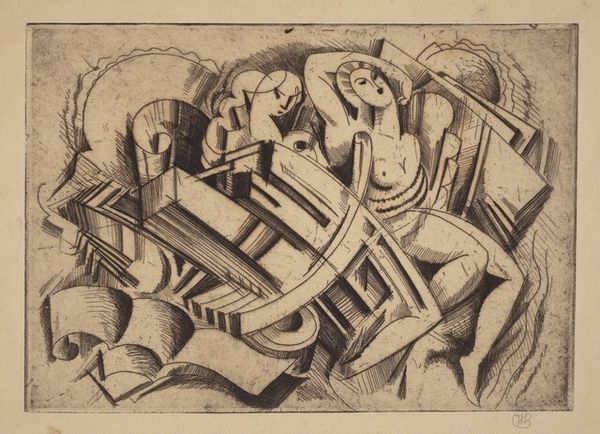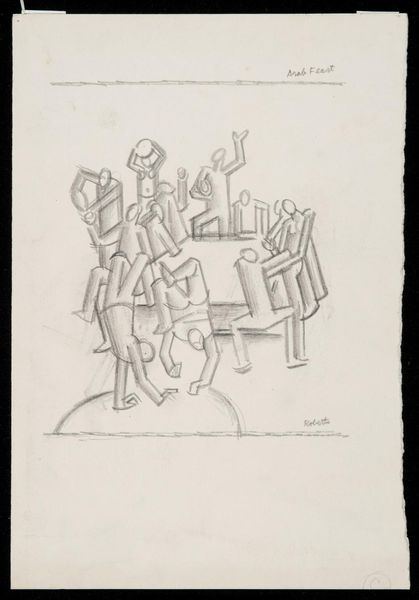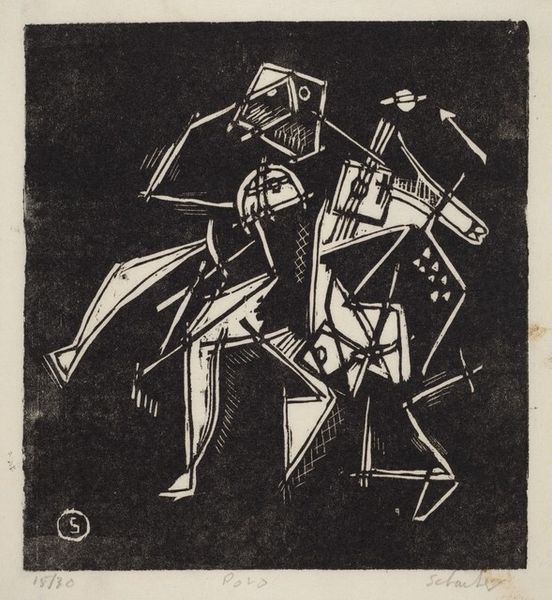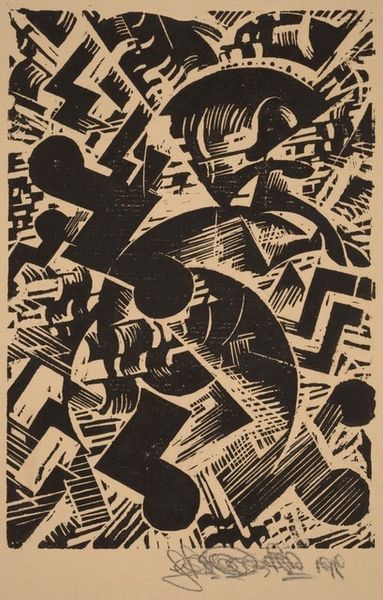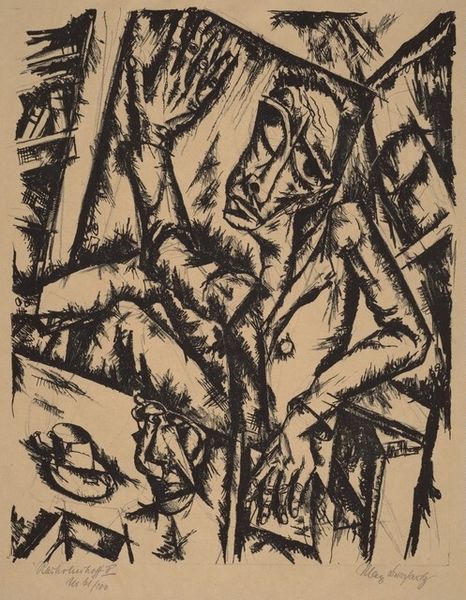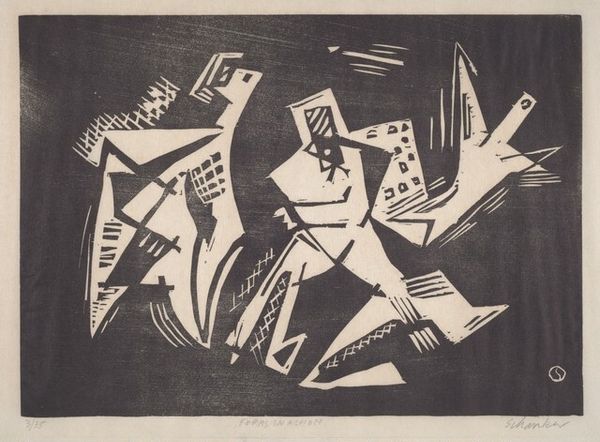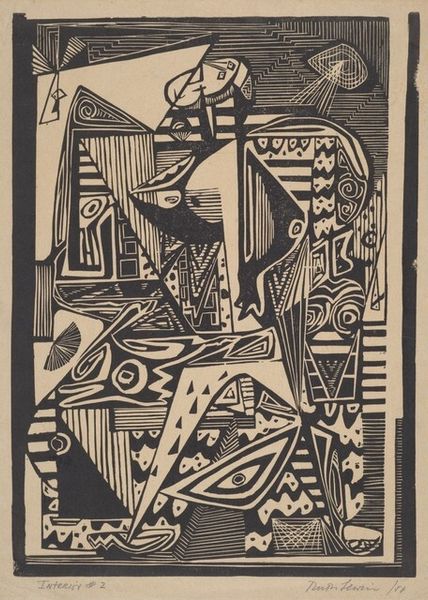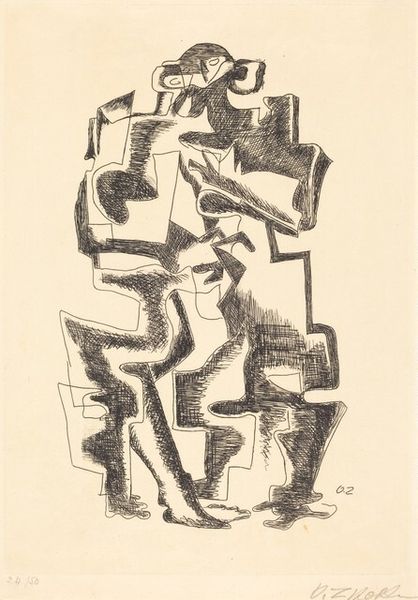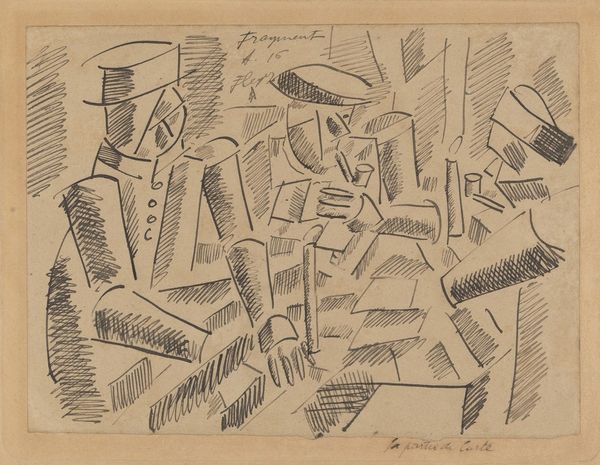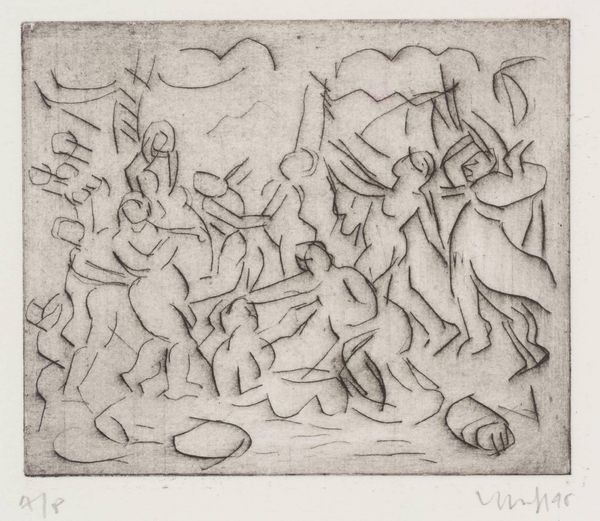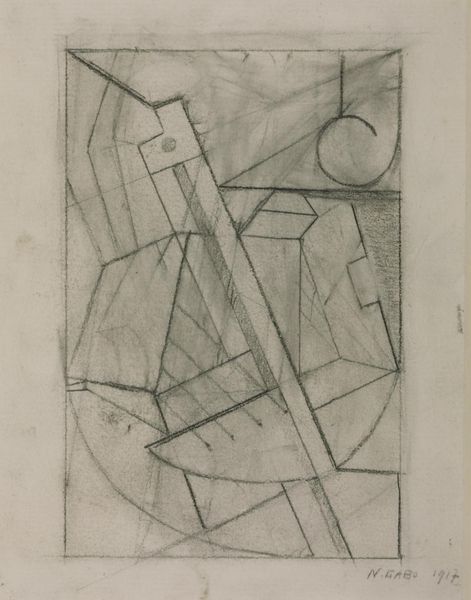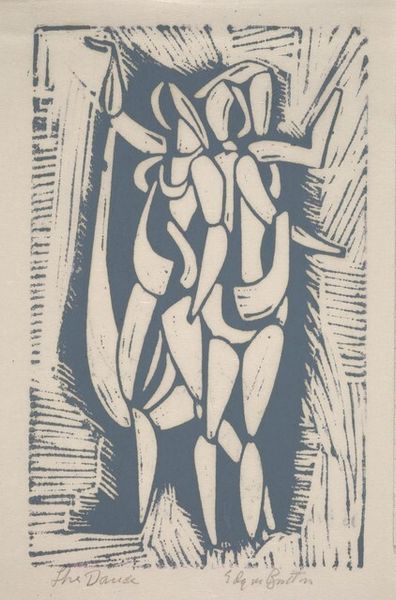
Dimensions: 127 x 102 mm
Copyright: © The estate of William Roberts | CC-BY-NC-ND 4.0 DEED, Photo: Tate
Curator: This is William Roberts’ ‘Study for Beach Fun,’ held here at the Tate. Editor: The composition is striking—these almost geometric figures, so angular, yet they convey a sense of lazy warmth. It's intriguing. Curator: Roberts was deeply engaged with Vorticism, and the work reflects the post-war focus on leisure and working-class experiences. Editor: I see it now; the simplification of forms, almost machine-like, speaks to a broader modernist aesthetic, echoing themes of mechanization and the body. Curator: Exactly! Consider the accessibility of beaches post-war, the changing social dynamics, and Roberts’ own background within that context. These figures, though stylized, tell a story of a specific moment in British social history. Editor: Ultimately, the image still holds power through its formal elements. That stark contrast between light and shadow, for example, creates a captivating sense of depth. Curator: I agree. It shows the intersection between formalism and a deeper understanding of the society that created this art, helping us better appreciate the work as a whole.
